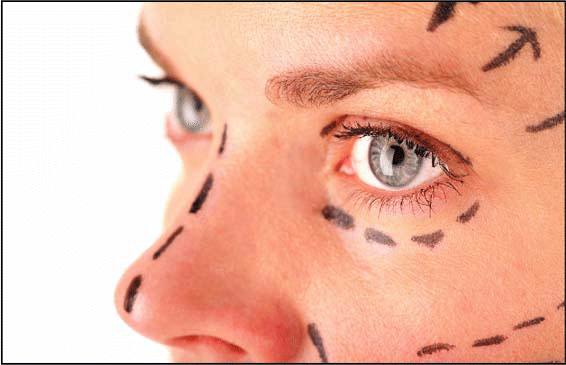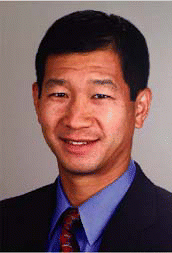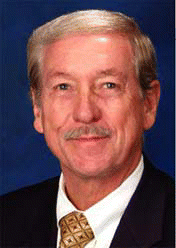SAN DIEGO—“Accentuate the positive” was one of the pointers heard by the almost 200 otolaryngologists and surgeons who attended the Triological Society’s April 28 panel discussion on “Nuances in Rhinoplasty” at the Combined Otolaryngology Spring Meeting. Stephen S. Park, MD, of the University of Virginia, moderated the discussion that offered tips “that might impact how you do your next rhinoplasty.”
Explore This Issue
July 2007Offering pearls and pitfalls were panelists Roger Crumley, MD, MBA, of the University of California, Irvine; Jonathan Sykes, MD, from the University of California, Davis; and Patrick Byrne, MD, of Johns Hopkins.

Starting Out
“Doing conservative surgery on properly selected patients will yield high patient satisfaction, which will in turn yield referrals,” Dr. Crumley told the audience members. “And it is a necessity during your first two years in practice.”
He said surgeons should be very careful in selecting cases among the first 50 patients and “do the less complicated ones that are going to look good out on the street. You’ll get a reputation.”
Emphasizing the importance of preoperative counseling, Dr. Crumley said to stress the negative after the patient decides to go ahead with the surgery. “Tell patients that it will be worse than expected and they will regret doing surgery. It will hurt a little bit, there will be swelling, and there’s a one in six chance for revision.”
Then, post-surgery, “stress the positive,” he continued. In particular, make sure the office staff tells them they look great and most people “look much worse this soon after surgery.”
At the same time, he said to be honest about imperfect results, but not to point out minor imperfections that the patient hasn’t complained about. “Let your patient tell you what problems there are,” he said.
Offering a tip on eyelid ecchymosis, he gave credit to Allan Sherman, MD, from UC San Francisco, who used two eye pads, folded once, per side. The suggestion was to:
- Compress medial aspect, infraorbital rim.
- Wrap with Kerlix, send patient home for removal 4 to 6 hours later.
- Recognize that the downside is that the patient is essentially blindfolded.
- Provide intraoperative Decadron 10 mg IV.
- In the latter part of the procedure, have an assistant apply immediate external pressure to osteotomy sites.
Commenting briefly on open (external) versus closed (endonasal) SRP, Dr. Crumley said to learn both, but use open early on. He recommended doing 80% of the first 50 with the open procedure and with all cases after the first 50, doing 80% as closed SRP.
Diagnosis and Treatment Planning
When Dr. Sykes took the podium, he told participants that “accurate diagnosis is the most important thing to planning and ultimately getting a good result. I feel that when the nose isn’t straight after surgery it’s often because we’ve either underdiagnosed or inadequately diagnosed.”
He stressed that it is important to discuss symmetry with patients. “If a patient has significant bony asymmetry, you probably can’t fully straighten the nose. You need to manage their expectations.”
Noting that there are 27 permutations to the upper, middle, and lower thirds of the nose, he said a deviation may be any one of these. And failure to correct that deviation “results from inadequate diagnosis, poor planning, faulty execution, or suboptimal healing. By and large, the inadequate diagnosis and poor planning are the most common.”
In a discussion of osteotomies, he said they are performed when the upper third of the nose is deviated, and the exact technique and style of the osteotomy should be related to what the specific problem is. Lateral osteotomies are performed to narrow or infracture the nose, but may be inadequate by themselves. “We need to do medial osteotomies or medial and intermediate osteotomies to fully straighten the nose,” he said.
Skin Strategies
Dr. Byrne told audience members that during his fellowship, he was told that it takes seven years to master 70% of rhinoplasty. With that introduction, he went on to describe some of his greatest challenges over the years. For the COSM program, he paid special attention to extremely thick or thin skin.
“Thick skin introduces great challenges, prolonged edema, and difficulty in achieving a very nice definition,” he said. “Thin skin very easily shows small irregularities. Intermediate thickness of skin is most favorable and the easiest patients to satisfy.”
So, what does one do when the skin is less than optimal?
First, counsel and educate the patient; help the patient have realistic expectations and educate him or her about proportion.
“When a patient comes in and asks that their nose be larger, most everybody really wants a more proportional look,” he said. “The educational process starts by going through photographs and showing them how you can make a nose technically larger than it is and yet it looks more proportional.”
“The main strategy for thick skin is to use more structural grafting,” Dr. Byrne said. “Focus on proportion and shape, less on size.”
The thin-skinned patient is more of a challenge, he said. “Again, it starts with counseling and education of the patient. They run the risk of having visible irregularities. Pay attention to the quality of cartilage. The challenge for me is people who want a lot of tip work. I ask if they can live with something more conservative.”
If you can’t avoid patients with thin skin, Dr. Byrne said to at least avoid cartilage-splitting techniques; soften the edges of the cartilage and do very meticulous carving of grafts.
Over the Hump
Rounding up the presentations, Dr. Park said he wanted to discuss the most common, most simplistic kind of rhinoplasty—hump reduction.
“It’s not the cleft lip nose, it’s not the revision, and it’s not the ultra thin-skin nose,” he said. “It’s the type of rhinoplasty where maybe you do a septoplasty or polypectomy and the patient says ‘While you’re there, can you just remove my hump?’”
“I think the perception of most people is that it’s pretty straightforward,” Dr. Park said. “And while it usually is, we also see complications in these patients.”
He noted that some patients will come back three months later and say that all they wanted was a septoplasty and the surgeon urged them to shave the hump. “I hear that surprisingly often,” he said.
For hump removal, he said there are a series of questions he goes through. “You can’t leave the initial consultation for a hump reduction without addressing these questions,” he said.
First, what is the hump made of? There are different anatomic etiologies to humps. The question is important because the answer will dictate the approach used. A large cartilaginous hump reduction will necessitate an external route in order to reconstruct the middle vault. Prophylactic spreader grafts are often needed in order to preserve width on the frontal view.
Second, recognize that the dorsal strut of the septum may be twisted and require elaborate splinting maneuvers.
Third, not all humps need reduction. Where does the nose begin and does the nasion need augmentation in order to restore balance to the profile?
Similarly, the fourth task is assessing chin projection with respect to the size of the nose. A small chin will create the illusion of a large nose, and the ideal aesthetic proportion may require chin augmentation in conjunction with a hump reduction.
In summation, Dr. Park said that if you’re going to do a hump reduction, be very quick to use spreader grafts. “Be careful of the deviated septum because you may unmask the twisted nose, and if you do, be prepared to fix it. Finally, somewhere in your consultation, be sure you assess the low radix and the small chin.”
©2007 The Triological Society


Leave a Reply